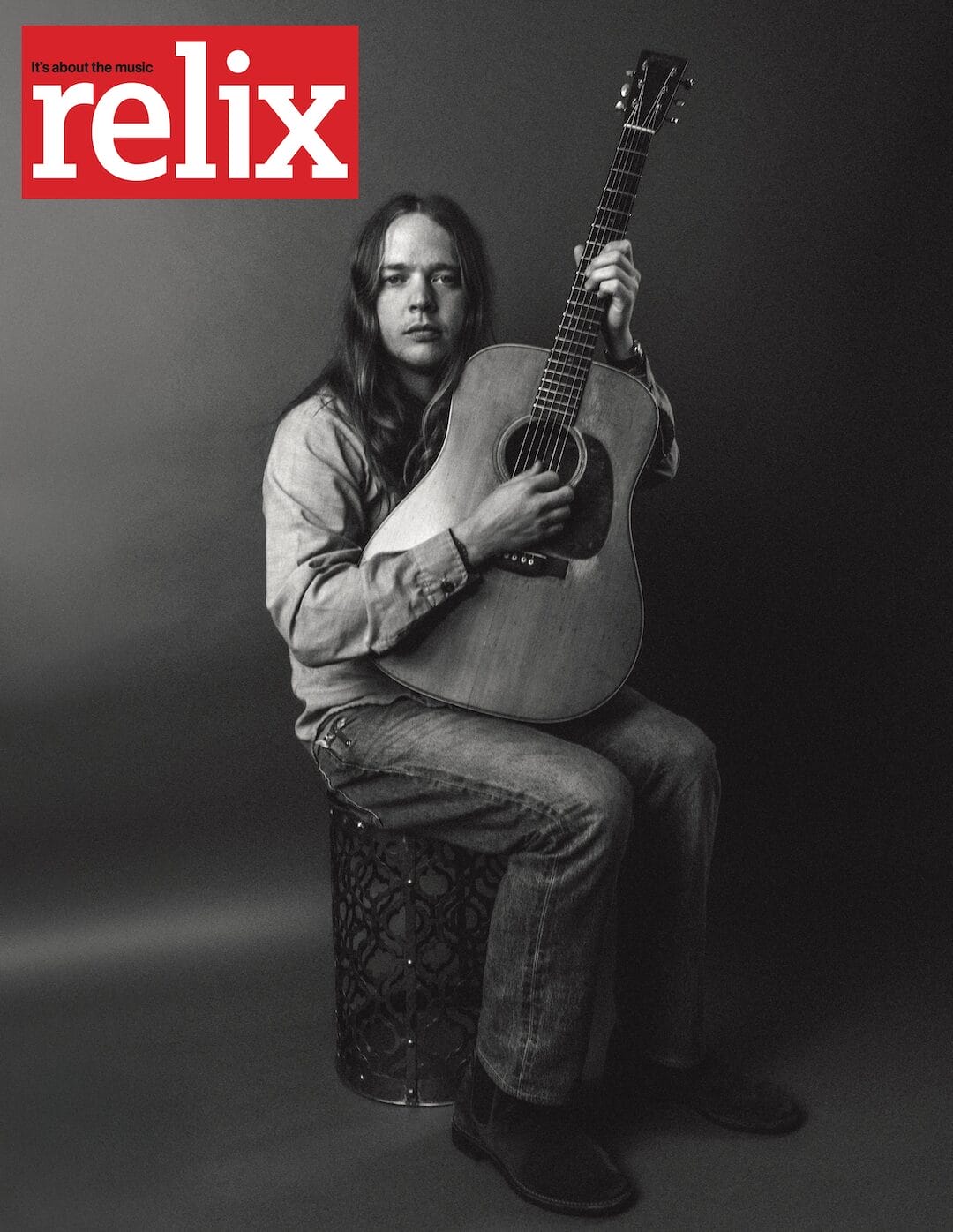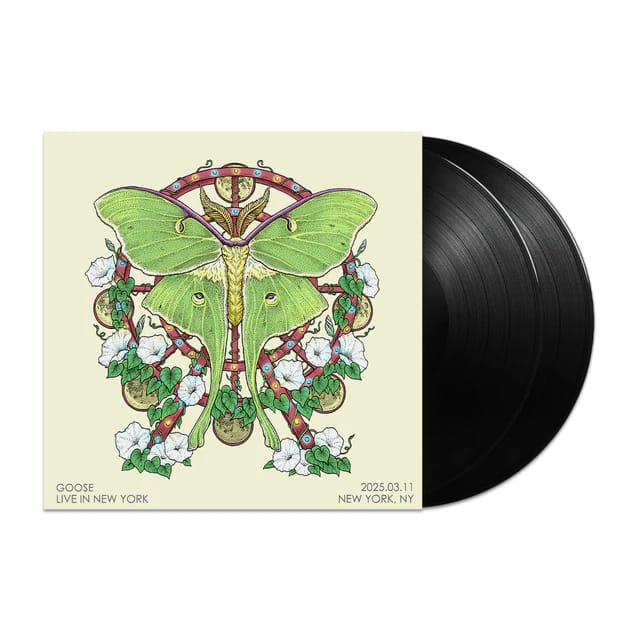Tyler Mitchell and Marshall Allen: Sharing Sun Ra’s Journey

“Sun Ra used to tell us: ‘I don’t want to hear what you know. I want to hear what you don’t know,’” longtime Arkestra member Marshall Allen says of the approach inculcated by the group’s founder over 70 years ago.
While that idea may sound like a koan, the 99-year-old Allen explains that this concept continues to inform the music of the band that he now leads, following Sun Ra’s passing in 1993. It draws on the notion that artistic expression is intertwined with the vagaries of a given day.
Sun Ra implemented a rigorous practice regimen that often encompassed a full week of rehearsal in the Philadelphia house the band collectively occupied. However, after learning hundreds of compositions to Sun Ra’s exacting standards, there was always room for variation and spontaneity.
“We’ve got a book full of strict music, but you also put that together with the vibrations of the day,” Allen offers. “So the tune we did yesterday won’t be the same today because it’s a different day. And the tune we play today will be played different tomorrow. It’s about the vibrations of the room and the people in there. It depends on the spirit of things. It’s just like life—when you walk out the door, you don’t know what’s out there on the street. You don’t know nothing.”
This concept also embraces the corresponding belief that a mistake is almost irrelevant in the moment. “You’ve got strict charts that have been written down. Everybody has something to do. But the vibrations of the day, that’s different than the charts,” Allen says. “You don’t know nothing so you’ve got nothing to lean on. That means you have to activate the spirit, which guides you. It guides you to be in the right place at the right time instead of the right place at the wrong time.”
This is the approach that bassist Tyler Mitchell has taken to heart while producing two albums that highlight the music of Allen and Sun Ra—2022’s studio record Dancing Shadows and the new live release Sun Ra’s Journey. Mitchell is wellsuited for the task, given his two stints as a member of the Sun Ra Arkestra.
The bass player grew up in Chicago, where he first connected with the avant-garde jazz scene before relocating to New York in 1984. Mitchell, who was then in his mid-20s, soon established himself as an adept player and received an invitation from Sun Ra to join the Arkestra. He did so for a couple years, touring in the U.S., Europe and Japan while appearing on two records, Reflections in Blue and Hours After. Then he stepped away and became an in-demand collaborator, working with musicians such as Art Taylor, Shirley Horn and Jon Hendricks. Mitchell moved to Mexico in 2000 and remained there for a decade, performing with a range of artists. He returned to New York in 2010 and resumed his work with the Arkestra, now under Allen’s direction.
Allen first met Sun Ra (born Herman Poole Blount) in 1958. After enlisting in the 92nd Infantry Division during World War II, Allen was stationed in France, then studied saxophone at the Paris Conservatoire on the GI Bill. He eventually returned to the United States, settling down in Chicago, where he crossed paths with Sun Ra and immediately began attending performances. Allen expressed interest in joining the group but Sun Ra initially held him at a distance.
Allen remembers: “When I first played for him he said, ‘You’ve got a nice tone.’ I said. ‘Well, thank you.’ Then he said ‘But you’re playing sentimental, which is not what I want.’ He was right, of course, but it took me a little while to figure out what he meant.”
With that resolved, Allen joined the Arkestra and remained with the collective as it relocated to New York in 1961 and then to Philadelphia in 1968. There the band moved into a house owned by Allen’s father, which became known as the Arkestral Institute of Sun Ra. Allen still resides there today.
It was here that he experienced Sun Ra’s distinctive approach to rehearsal and the way that it manifested itself in the live setting.
“He tailor-made the music just for you, but you had to be prepared for everything to change,” Allen says. “We’d play seven days a week and learn all the parts but then, when the time would come for the performance, you wouldn’t have those parts anymore because they would change. He’d change your part five minutes before you’d walk onto the stage. He’d also have one person go open the show. It might be a drummer, it might be a horn player, but that person had to go out there and open the show instead of opening the show with the whole band. All of that was a surprise, nobody practiced that. You knew nothing so you had to activate the spirit and let it guide you.”
During Mitchell’s initial stretch with the group, he found himself somewhat overwhelmed by the circumstances, preventing him from establishing a close relationship with Allen. “I met Marshall when I joined the band, but during that time, there were a lot of musicians,” he points out. “It was a really tight band back in those days with people like John Gilmore and Pat Patrick still around. It was a big challenge for me to even get in the band and then connect with everybody. Marshall and I finally got to be closer when I came back into the band in 2010.”
“When I was in the band with Sun Ra in the ‘80s, he was doing a lot of standard songs at the time,” Mitchell adds. “He was a master arranger, who had worked for Fletcher Henderson. So we were doing a lot of standards, like Gershwin and the Great American Songbook. Even though I was with the band for a while back in the ‘80s, I caught him in a period where he wasn’t doing a lot of his music. He mixed it in, but he wasn’t doing it that much. So it’s just in the last 10-12 years that I really started learning the music of Sun Ra. When I came back with Marshall as the musical director, the band was focusing on original compositions by Sun Ra and Marshall.”
Mitchell mentions that some of his motivation in recording the albums was to raise awareness of Sun Ra’s music, which he believes is somewhat misunderstood. “I wanted to give it some exposure because a lot of people don’t really know it. They often go by what they’ve heard about it, without actually having heard it. So I tried to take something from the different periods of his music. I wanted to be as free as I could on some songs but also illustrate how conventional Sun Ra’s music was. A lot of these songs are like standards.”
Then the bassist turns his attention specifically to Allen, who happens to be in the room with him. Even though Mitchell lives in New York and Allen is in that same Germantown home, the bassist makes regular visits to connect, perform and learn.
“I would like people to see that we’ve got a master artist in our midst. He’s got so much to give and explain. He’s a walking encyclopedia with his music and it’s taken almost a hundred years for him to get his point across. It’s been a long time coming. I’m hoping these recordings are going to convey that and people will see what a giant he is.”
While the Sun Ra Arkestra roster often swells to more than two dozen musicians, Mitchell assembled a sextet for Dancing Shadows. The combo features Mitchell (bass), Allen (sax, evi), Allen’s student Nicoletta Manzini (alto sax), Chris Hemmingway (tenor sax) and two fellow members of the Arkestra: Wayne Smith (drums) and Elson Nascimento (percussion). The live set— which was recorded at New York’s Smalls Jazz Club and is being released as part of SmallsLIVE Living Masters Series—also includes Arkestra alum Farid Barron on piano, along with trumpeter Giveton Gelin and percussionist Ron McBee.
The results, as intended, allow plenty of room for Allen’s contributions both as a composer and a performer.
“He writes in a conventional form but the music is amazing,” Mitchell raves. “Not only that, but he writes and then plays another way so that the expression he makes is all Marshall. It’s totally original. He’s not playing clichés or someone else’s licks. He creates his own licks, his own clichés.”
Both records also draw heavily on the Sun Ra songbook.
On the studio album, Mitchell identifies “Angels and Demons at Play,” which Sun Ra wrote with Allen, as a personal favorite. “The melody is like a chant to me,” Mitchell remarks. “And on the studio record, I didn’t use guitar or piano. So we didn’t have those chordal instruments. Instead, I was letting the horns be more like the piano and they were playing the chords with their horn parts.”
As for Sun Ra’s Journey, he points to “Carefree.” “That’s the first song on the record and I was motivated to include it because there are actually two different ‘Carefrees.’ I did both of them—one on one record and the other one on the other record. They’ve got the same kind of bassline, but two completely different melodies and different moods altogether. That says a lot about this music.”
Both albums feature versions of Thelonious Monk’s “Skippy,” the lone song that’s not part of the Sun Ra repertoire. Mitchell discloses that his intent in recording it was to showcase Allen’s nimble creative phrasings. “I love Monk’s music,” the bassist says. “I know a lot of his songs and ‘Skippy’ has always been a really challenging one. People don’t play it too often and I had this feeling that it would be a good idea to mix ‘Skippy’ with a James Brown kind of funky groove and then let Marshall stretch out and do his thing on top of it. I thought that would be a meeting of all kinds of worlds.”
The live album also includes a version of “Discipline,” a fittingly named Sun Ra composition that has surfaced in multiple forms over the years.
“He’s got 100 disciplines,” Allen comments. “‘Discipline One,’ ‘Discipline Two,’ ‘Discipline Three, ‘Discipline Four.’ Sometimes we use ‘Discipline 27’ as our theme song. So he covered a lot of ground. There are all kinds of disciplines in life. You can’t learn if you don’t have discipline.”
Mitchell then turns to the spontaneous compositions that emerged during these sessions. “We came in and created on the spot,” he notes. “On a lot of those originals, I’d let Marshall direct us and his direction shaped those songs. The originals that I wrote and the saxophone player Nicoletta wrote were pretty much inspired by Marshall’s directions. Even if I was the leader for the record, I still let him take charge at certain moments. That way, I knew he would help direct me just where I wanted to go.”
Allen picks up on this and offers his thoughts on finding one’s bearings while playing free. “When you step outside, it’s chaotic. People are walking one way, cars are going this way, cars are going another way, dogs are running around, cats are chasing mice, children are screaming. All of that is going on around you. It seems like a whole big mess. So you go out there with your knowledge and the spirit of doing what you’re going to do—or maybe doing what you don’t know you’re going to do. But everybody’s going where they’re supposed to go. You move through the whole maze of everything and get to where you’re going. The music is the same way. Everybody’s playing, but they’re playing on one song. Just like everybody in the street is going in a different direction, but they’re going in the same direction.”
“I’m still learning a lot about the whole concept of this music. I thought I knew, but I’m still learning,” Mitchell acknowledges. “So it’s been a joy to get one-on-one time with Marshall recently. When we play together in the Arkestra or when we did my little project, with some of the songs I just let it happen and it freed me up. It didn’t necessarily make the music more free or abstract. It just made me free. I was able to approach the whole project differently than I had before. What I’ve been able to take away from doing this with him is that, like he was saying, there are no wrong notes. I’m now convinced that there’s no such thing as a wrong note, although it’s hard to explain.”
Allen clarifies, “It’s the wrong note in the right place.”



















